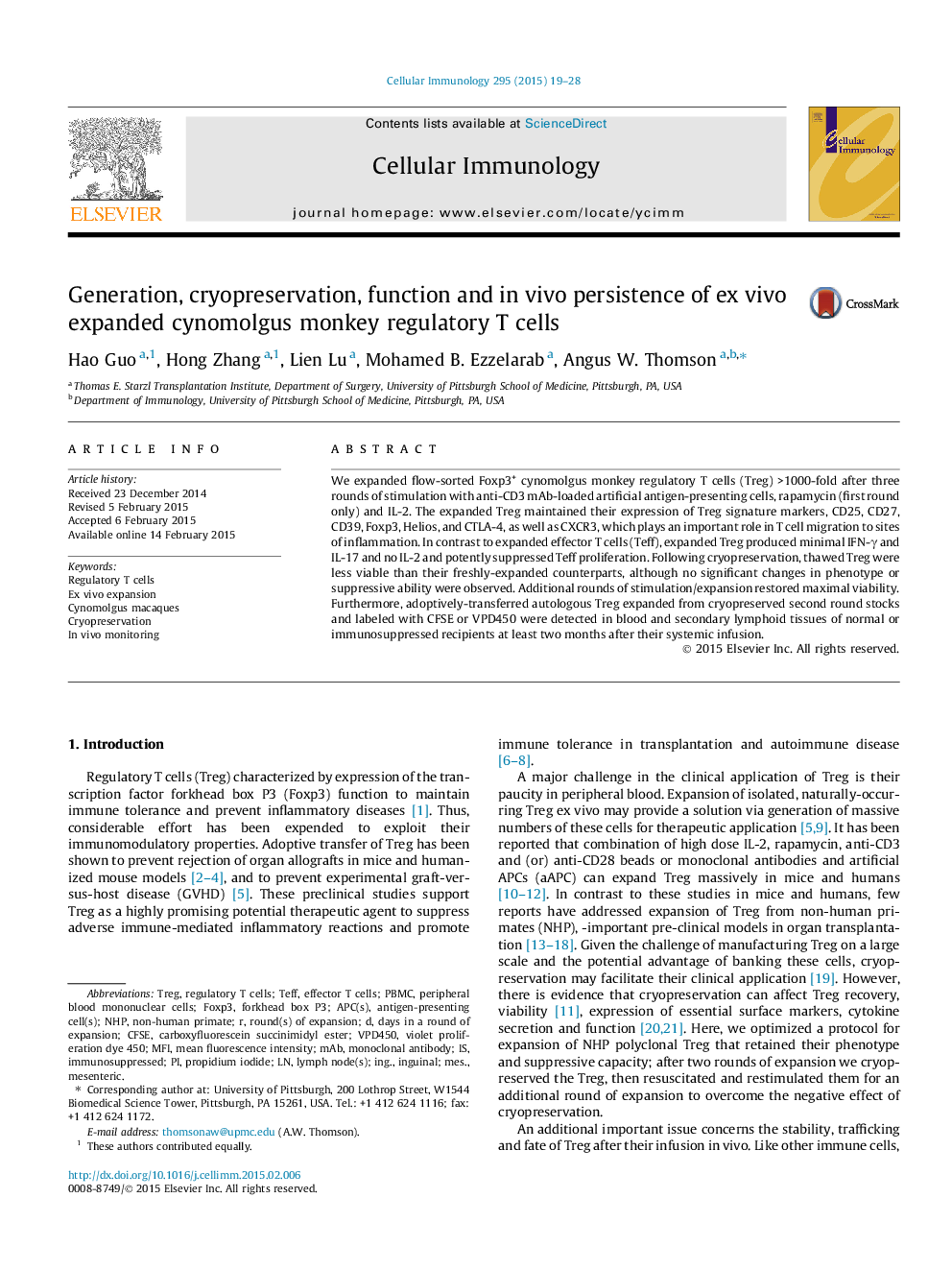| Article ID | Journal | Published Year | Pages | File Type |
|---|---|---|---|---|
| 2166943 | Cellular Immunology | 2015 | 10 Pages |
•Cynomolgus monkey Treg expand massively with anti-CD3 Ab-pulsed artificial APC and IL-2.•Cynomolgus Treg retain expression of signature markers after each round of expansion.•Expanded Treg produce minimal IFNγ and IL-17 and no IL-2 and are potent suppressors.•Re-stimulation/expansion of cryopreserved cynomolgus Treg restores maximal viability.•Autologous Treg are evident in blood and lymphoid tissues 2–3 months after infusion.
We expanded flow-sorted Foxp3+ cynomolgus monkey regulatory T cells (Treg) >1000-fold after three rounds of stimulation with anti-CD3 mAb-loaded artificial antigen-presenting cells, rapamycin (first round only) and IL-2. The expanded Treg maintained their expression of Treg signature markers, CD25, CD27, CD39, Foxp3, Helios, and CTLA-4, as well as CXCR3, which plays an important role in T cell migration to sites of inflammation. In contrast to expanded effector T cells (Teff), expanded Treg produced minimal IFN-γ and IL-17 and no IL-2 and potently suppressed Teff proliferation. Following cryopreservation, thawed Treg were less viable than their freshly-expanded counterparts, although no significant changes in phenotype or suppressive ability were observed. Additional rounds of stimulation/expansion restored maximal viability. Furthermore, adoptively-transferred autologous Treg expanded from cryopreserved second round stocks and labeled with CFSE or VPD450 were detected in blood and secondary lymphoid tissues of normal or immunosuppressed recipients at least two months after their systemic infusion.
